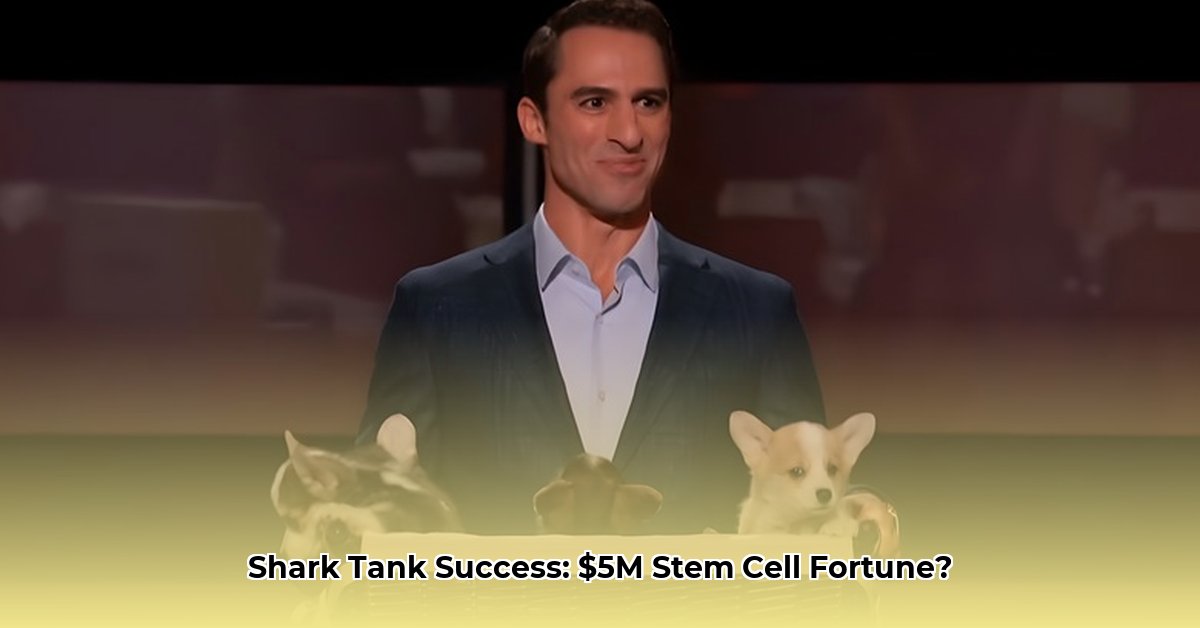
Gallant Stem Cell's journey is a compelling narrative of resilience and reinvention. Once a vision of direct-to-consumer stem cell banking, it now charts a new course in pet healthcare, leveraging its technology through multi-state clinical trials and generating an estimated $5 million in annual revenue. This success follows a challenging path marked by setbacks, including a failed Shark Tank appearance and the unexpected death of its founder. For more on Shark Tank business ventures, see this analysis.
The Shark Tank Debacle and Early Struggles
Gallant's Shark Tank appearance aimed for a $25 million valuation, pitching a revolutionary direct-to-consumer stem cell banking service. The Sharks, however, deemed the business model unsustainable, citing high costs and a market unprepared for such a service. This rejection, coupled with the founder's unexpected passing, presented significant hurdles. The initial high-cost, direct-to-consumer business model proved untenable due to market realities and operational challenges.
A Pivotal Pivot: Acquisition and Market Shift
Facing adversity, Gallant strategically pivoted from individual consumers to the veterinary market. The late 2019 acquisition of Cook-Regentec provided crucial expertise and resources, facilitating a shift towards partnerships with veterinary clinics and hospitals. This decisive move proved to be the catalyst for their current success. This change allowed Gallant to focus on generating revenue through clinical trials, establishing a more sustainable business model.
Clinical Trials, Revenue, and the Promise of Pet Healthcare Innovation
Currently, Gallant generates an estimated $5 million in annual revenue, fueled by multi-state clinical trials focused on treating canine and feline atopic dermatitis, chronic kidney disease, and osteoarthritis. These trials hold significant potential to revolutionize pet healthcare, addressing widespread and debilitating conditions. The success of these trials could unlock substantial market opportunities and further elevate Gallant's net worth. Will the results support the promising early indications?
Challenges and Risks: Navigating the Path to Sustainability
Despite its progress, Gallant faces significant challenges. Securing further funding for continued research and development remains critical. Navigating complex regulatory hurdles, both at the state and federal level, presents further obstacles. The impact of the founder's death, while overcome, continues to shape the company's leadership and strategic direction. What strategies will ensure the company is optimally placed to navigate these complex issues?
The following risk assessment matrix illustrates the potential challenges ahead:
| Risk Factor | Likelihood | Impact | Mitigation Strategies |
|---|---|---|---|
| Clinical Trial Failure | Moderate | High | Rigorous study design, robust data analysis, multiple trials |
| Regulatory Delays | Moderate | High | Proactive engagement with regulators, meticulous documentation |
| Competition | Moderate | Medium | Differentiation through unique treatment approaches, strategic partnerships |
| Funding Shortages | Moderate | Medium | Diversified funding sources, grant applications, strategic investors |
| Leadership Turnover | Low | Medium | Succession planning, strong team development |
The Future of Gallant: A Balanced Outlook
Gallant's long-term outlook is promising, but contingent on numerous factors. Achieving FDA-equivalent approvals for its therapies would represent a monumental achievement, significantly boosting its value and market share. Expansion into new therapeutic areas for additional animal conditions will also contribute to long-term success. However, continued success hinges on the successful completion of clinical trials, securing sufficient funding, and navigating regulatory complexities effectively. The company's dramatic turnaround underscores the importance of adaptation and strategic decision-making in the dynamic world of biotechnology. The current estimation of $5 million annual revenue represents a significant milestone, yet the journey toward long-term sustainability and profitability remains ongoing.